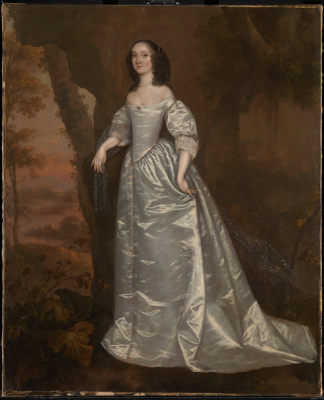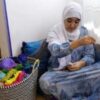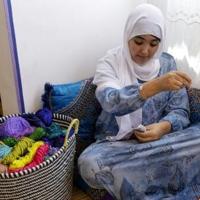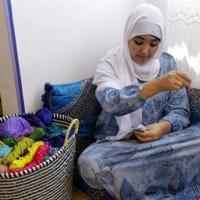
Joan Carlile Portrait of an Unknown Lady 1650 -1655
Tate Britain exhibits a dazzling array of works by over 100 women artists from Tudor times to WWI, highlighting those who have become obscured by history alongside familiar names.
Ten rooms chronologically arranged with miniatures, paintings, sculptures and photographs reveal these remarkable women
Susannah Horenbout and Levina Teerlinc were both daughters of 16th century Flemish artists and illuminators and both attended Henry VIII’s court. Terlinc was noted for painting exquisite miniatures, being described as a ‘paintrix.’ Esher Inglis was a scribe and illustrator of over sixty ‘manuscripts that contain the earliest known self-portraits by a woman. Sadly, no known works survive by Horenbout, whose skill was commended by Durer.
Artemisia Gentileschi famed ‘La Pittura’, ‘Self-portrait as the Allegory of Painting’, was owned by King Charles I and is displayed with her recently rediscovered and restored Susannah and the Elders painted for Queen Henrietta Maria, his queen, whilst she worked here.(See: www.indcatholicnews.com/news/48189 )
Joan Carlile was the first woman professional portrait artist in Britain, painting in oils. She attended Queen Henrietta Maria and her court dramatist husband was Keeper of Petersham Lodge, Richmond Park and park ranger. She made miniatures of pictures in the Royal Collection, including a Madonna and Child after Raphael. However, most of these are lost. She became a successful portrait painter, thriving after the Restoration. Two beautiful full length portraits of noblewomen exhibit her skill in depicting sumptuous textiles.
The 17th century provided opportunity for educated women to express themselves through the arts and achieve a measure of financial independence. Mary Beale and Mary More both wrote about equality in published discourses.
Beale radically considered equality the perfection of friendship, declaring it brought one closest to God and was the basis of marriage being an equal partnership. Her husband dedicated himself to her career, managing the studio whist their sons were artist assistants. They established a successful joint studio in Pall Mall. She became one of the foremost portraitists of her day and was praised by court painter Sir Peter Lely. Paintings displayed include a self portrait as Artemisia.
A case of miniatures includes Catherine de Costa’s ‘Penitent Magdalene’ and pictures by Susanna-Penelope Rosse, daughter of the court miniaturist. De Costa was the first known Jewish woman artist in England and painted members of the Jewish community. Her father was the Queen’s physician and converted to Catholicism.
A larger than usual miniature of the Virgin and Child is by Anna Maria Carew, who was appointed miniature copyist of the Kings’ pictures. She received a pension of £200 from Charles II.
The establishment of the Royal Academy in 1768 saw two women admitted as Academicians; the redoubtable Catholic Angelica Kauffman and Mary Moser, noted for her floral depictions. A self portrait of Kauffman and two of her splendid allegorical ceiling roundels of The Elements of Art- ‘Invention’ and ‘Colour’, exemplify her pre-eminence along with four mythological scenes.
Throughout the 18th century women artists were prominent in public exhibitions at The Society of Artists, The British Institution and the Summer Exhibition at the Royal Academy. Over 900 women exhibited their work between 1760.-1830.
An Honorary member of The Society of Artists, Mary Grace’s, only surviving work is her striking, self possessed self portrait, paintbrushes in her hand and palette resting on her arm.
‘The celebrated Miss Read’ trained in Paris and Rome, excelling in portrait painting. A Scot, from Dundee, she used her Jacobite connections to travel and attain a clientele. She made many contacts amongst the Catholic hierarchy especially Cardinal Albani, a great patron of the arts. She returned to England setting up a studio in London and painted Georgian aristocracy and members of the Royal Family. Sir Joshua Reynolds commissioned a number of full length portraits from her including the stunning Sarah, Lady Pollington, later Countess of Mexborough.
Maria Cosway ‘s dramatic portrait of Georgianna, Duchess of Devonshire as Cynthia, moon goddess, from Spenser’s ‘Faerie Queen’ ensured her acclaim as the ‘first of female painters’.
Magaret Sarah Carpenter was hugely successful in her day but another talent history overlooked. Many contemporaries urged that she be admitted as an Academician Her stunning portraiture was likened to Sir Thomas Lawence. A delightful roundel of ‘A Holy Family’,1826, is also displayed depicting Virgin and Child with St John the Baptist.
Amongst many outstanding nineteenth century artists is Louise Jopling, who trained under Impressionist Mary Cassatt, and founded an art school for women. Surprisingly the Glasgow Girls are overlooked.
Catholic sculptor Edmonia Lewis was of Black and Native American heritage. Subjected to racism and religious prejudice in America, she went to Rome where the Marquis of Bute became a patron. She made an altarpiece for him as well as the serenely beautiful bust of Christ,1870. Later she settled in London and is buried at Kensal Green’s Catholic cemetery.
The 20th century afforded many more opportunities and recognition for women artists such as Gwen John, Clara Montalba and Vanessa Bell.
Olive Mudie -Cooke sketched and painted scenes of WWI whilst driving ambulances and nursing, and Olive Eudis was the first female war photographer recording women at war in France.
The stunning show concludes with Laura Knight and Ethel Walker, both admitted as members of the Royal Academy, finally following Kauffman and Moser.
Until 13 October 2024
£20 Admission. Concessions available.
A book accompanying the exhibition: Now you See Us: Women Artists in Britain 1520-1920 edited by Tabitha Barber. Price £32 paperback/hardback £40
LINK
Women Artists in Britain 1520-1920: www.tate.org.uk/whats-on/tate-britain/women-artists-in-britain-1520-1920
This post was originally published on this site be sure to check out more of their content







